I’ve planted nearly a dozen magnolias of varying sorts in my garden, yet none are native to northwestern Virginia. There are hybrids and cultivars from east Asia, and two that are native to the United States. The Bigleaf magnolia (Magnolia macrophylla, below) is native to states just to the west of the Blue Ridge mountains, but not to the mid-Atlantic region, and the evergreen Southern magnolia (Magnolia grandiflora) is native from North Carolina to Florida.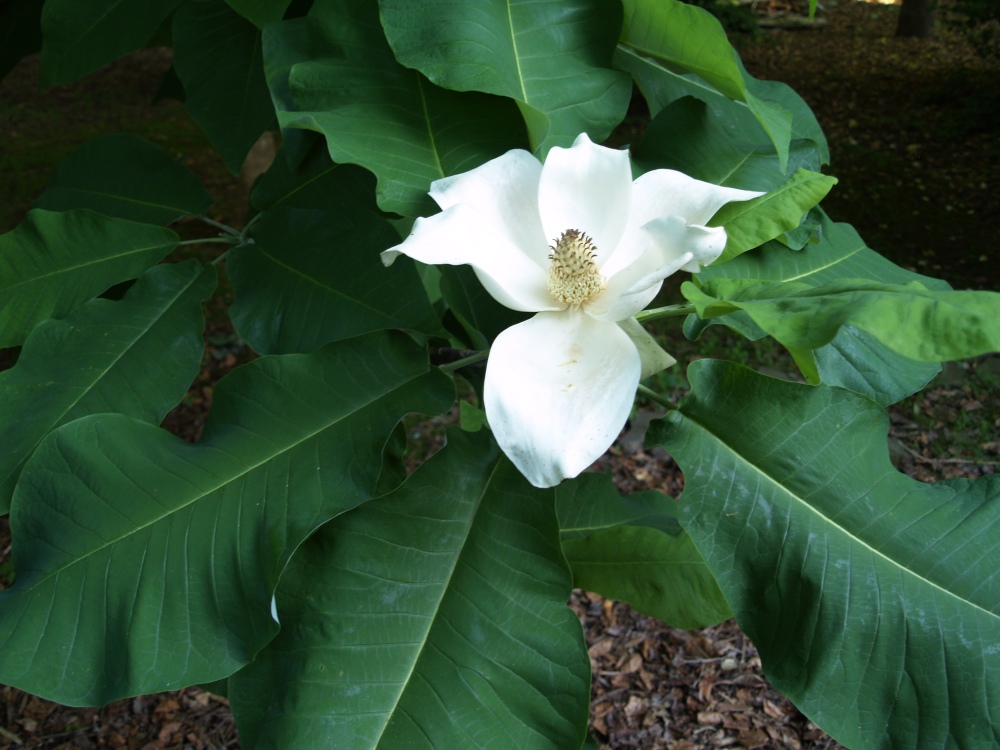
By the most liberal interpretation of the term “native”, both trees are acceptable as U.S. natives, but in any case I’m happy to include them in my garden. The Bigleaf magnolia is seldom planted, and rarely grown by tree nurseries because of its coarse texture and lack of attributes that make it any more than a novelty. My curiosity was aroused when I saw one stray tree in the field of a tree grower in middle Tennessee, and with its huge leaves I immediately made arrangements to purchase it as soon as it went dormant.
The small tree with huge leaves has grown to a wide spreading twenty-five foot tall tree with light green, deciduous leaves that are nearly two feet long from tip to tip. Not surprisingly, the big leaves are matched by huge flowers with the typical citrus-like scent of Southern magnolias. The seed cones that develop after flowering are the size of my fist, posing a danger to anyone walking beneath the tree in a late summer storm.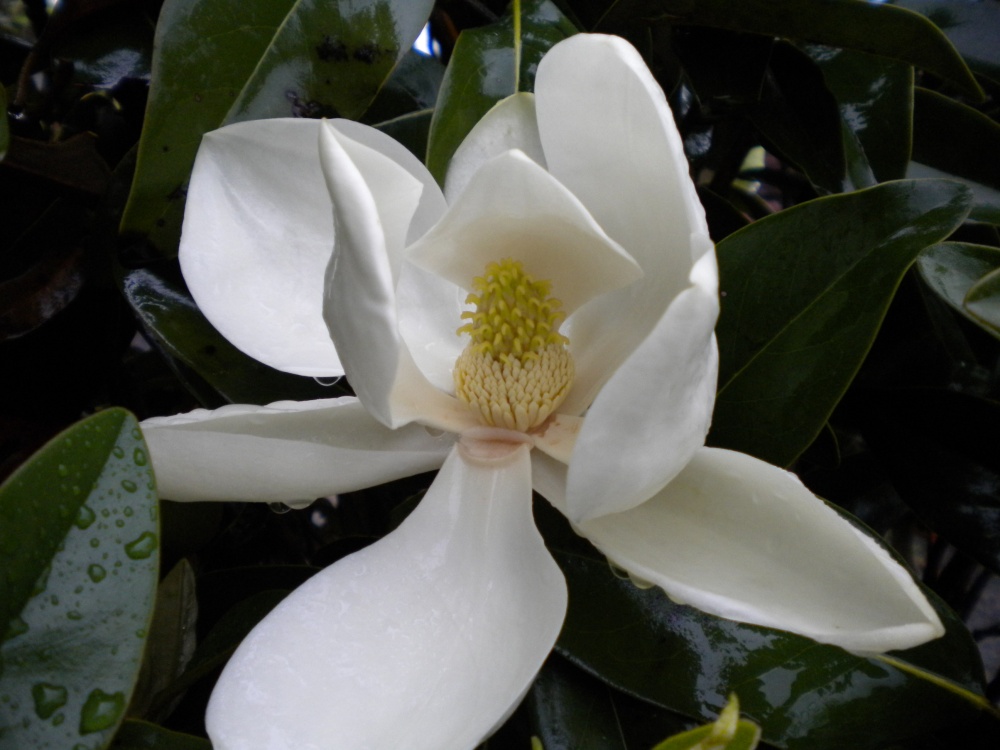
I’ve planted three cultivars of the evergreen Southern magnolia (Magnolia grandiflora, above) in the garden, which unfortunately have been damaged to varying degrees by heavy snow the past two winters. They have rebounded quickly, but with the central trunk broken they have become more wide spreading, with less symmetrical branching than is typical.
Since my garden is near the northern edge of the magnolia’s cold hardiness I chose cultivars for their cold tolerance. ‘Bracken’s Brown Beauty’ is the hardiest of the bunch (reputedly to thirty degrees below zero), but beside snow damage and occasionally some minor injury from ice, none have suffered from cold temperatures. ‘Alta’ and ‘Greenback’ are handsome trees that grow smaller and more narrow than other magnolias, though they do not flower heavily.
The first tree I planted in my new garden twenty some years ago was a selection of the native white flowered dogwood (Cornus florida ‘Cherokee Princess’, above). In the years since I’ve planted another white, a pink, one that is red flowered with green and yellow variegated foliage, and one with pendulous branches and white flowers. Several white flowered dogwoods arch for sunlight growing in the forest that borders the garden, and seedlings regularly sprout in the understory beneath the towering swamp red maples (Acer rubrum), tulip poplars (Liriodendron tulipifera), and scattered American beeches (Fagus grandiflora).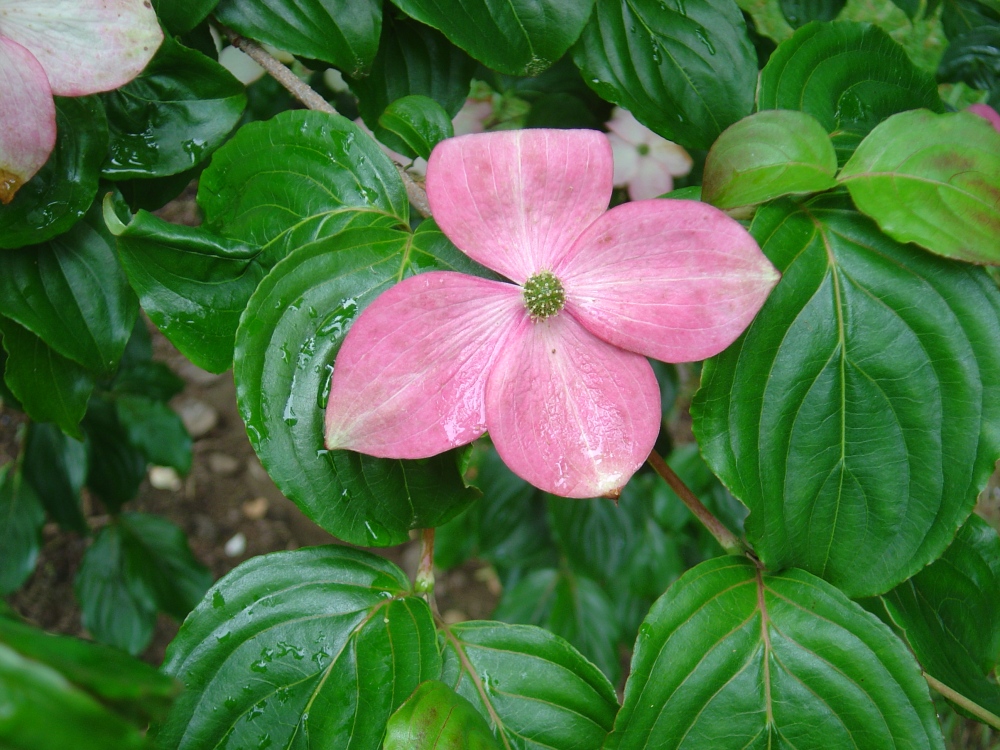
In a rainy spring the foliage of the dogwoods is regularly plagued by leaf spot (Anthracnose), and in damp, humid summers powdery mildew isn’t unusual, though these maladies are rarely fatal. A few of the trees have minor stem cankers, and I expect that eventually they will decline in health. But, their flowers, bright red berries, and long lasting autumn foliage color make this a marvelous tree despite these problems. There are a number of non-native dogwoods (Cornus kousa ‘Satomi’, pink flowered Chinese dogwood, above) and hybrids that I’ve planted that are more vigorous and disease resistant than the natives, but these flower after leafing in the spring and I prefer the earlier blooming native.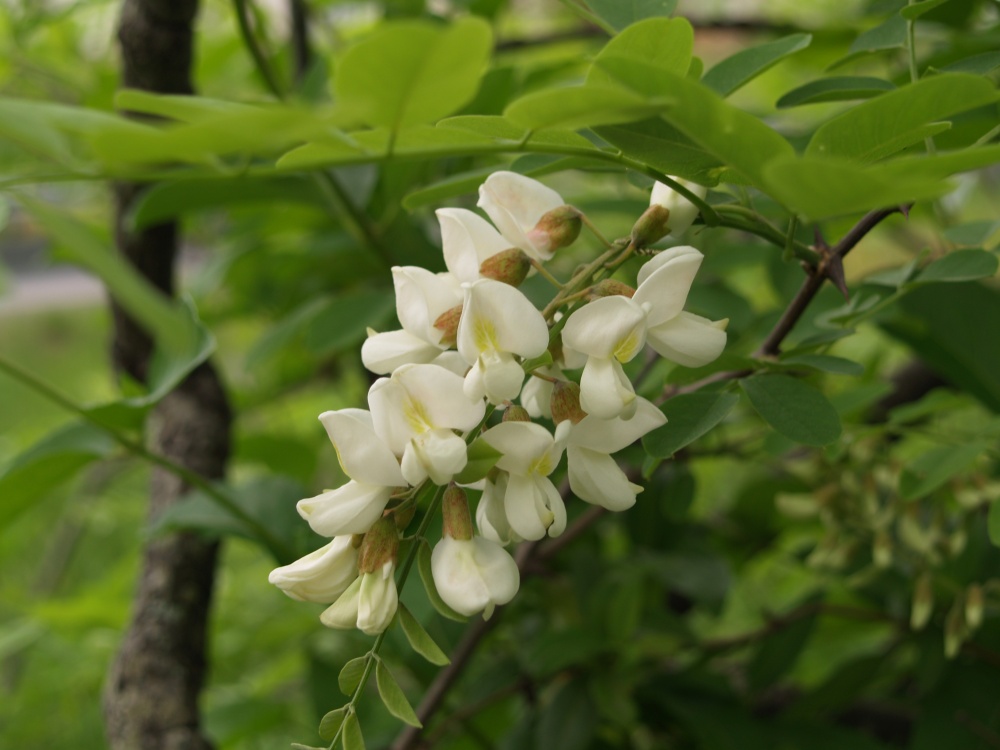
Years ago farmland bordered the property and several native Sassafras (Sassafras albidum) grew at the forest’s edge, but the land was further developed and the builder harvested some of the taller poplars. The sassafras could not manage the change, and sadly their health faded, so only the stumps remain. The property line was once delineated by locust fence posts and barbed wire, and today a few rough cut posts remain. I presume that a nearby thicket of black locusts (Robinia pseudoacacia, flowers above) was once the source of the posts.
The locusts’ flowers are sweetly fragrant, but the trees sucker vigorously so that they are rarely planted as ornamentals. Years ago I planted a yellow leafed cultivar (Robinia pseudoacacia ‘Aurea’) which had somewhat fewer of the vicious thorns that typically adorn black locusts, and it also seemed less determined to sucker. After several years the tree grew too large for the setting, and I was forced to remove it, but multiple seedlings still sprout each spring.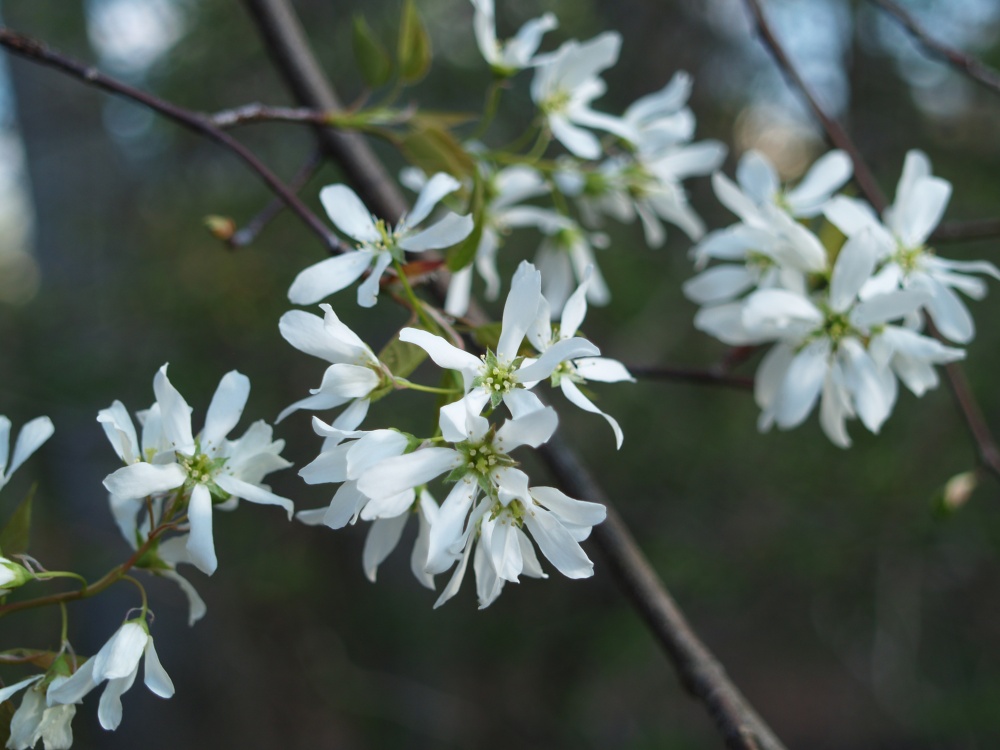
Along the forest’s edge that borders the garden I’ve planted multi trunked Shadblow serviceberries (Amelanchier canadensis, above) and a Carolina silverbell (Halesia caroliniana, below) that stretches for sunlight. Both are sturdy and pest free with brief, but splendid displays of spring flowers. I’m satisfied that the informal habit of the serviceberry is well suited to the woodline, but I would prefer that the silverbell be given a more prominent position with a bit more sun so that its form might be more compact with flowers closer to the ground.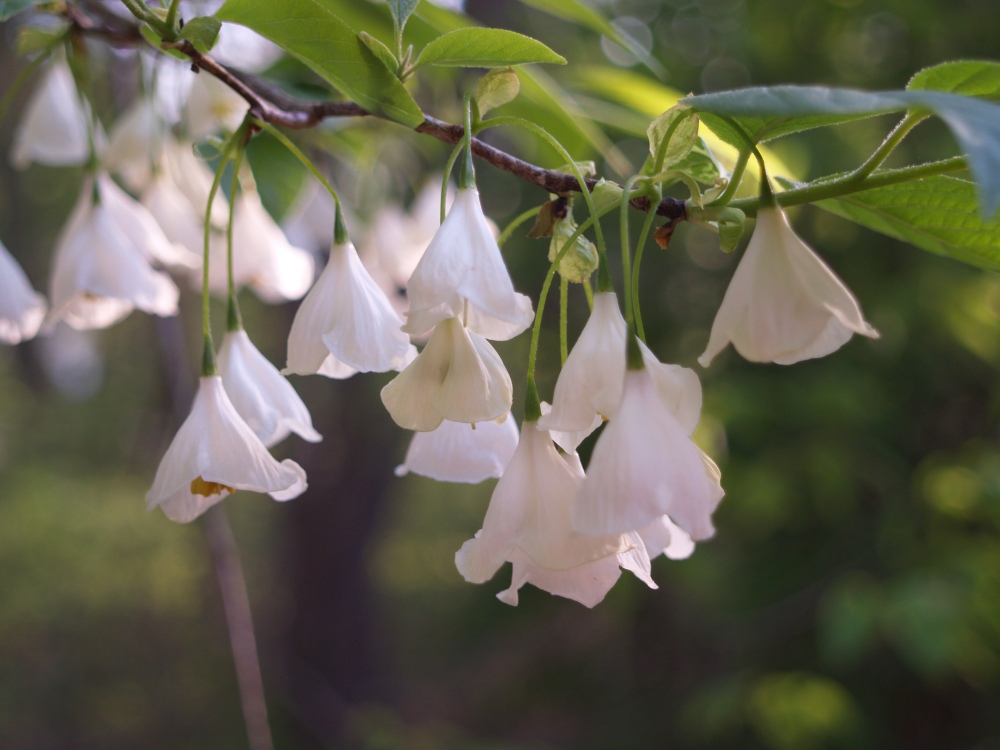
On the far side of the garden a sourwood (Oxydendron arobreum) was jammed into a space impossibly too small to enjoy its spectacular lily of the valley like blooms in mid-summer and brilliant autumn foliage color. When it was planted the small tree was thinly branched with a crooked trunk, and it was obviously collected from the wild rather than nursery grown. Such a practice is forbidden today, but sourwood grows so slowly that the cost to grow it is nearly prohibitive. I feel mildly guilty for having purchased a tree that was likely to have been dug from parkland, but I was young and dumb, and now I’m not inclined to dig the tree out and take it back.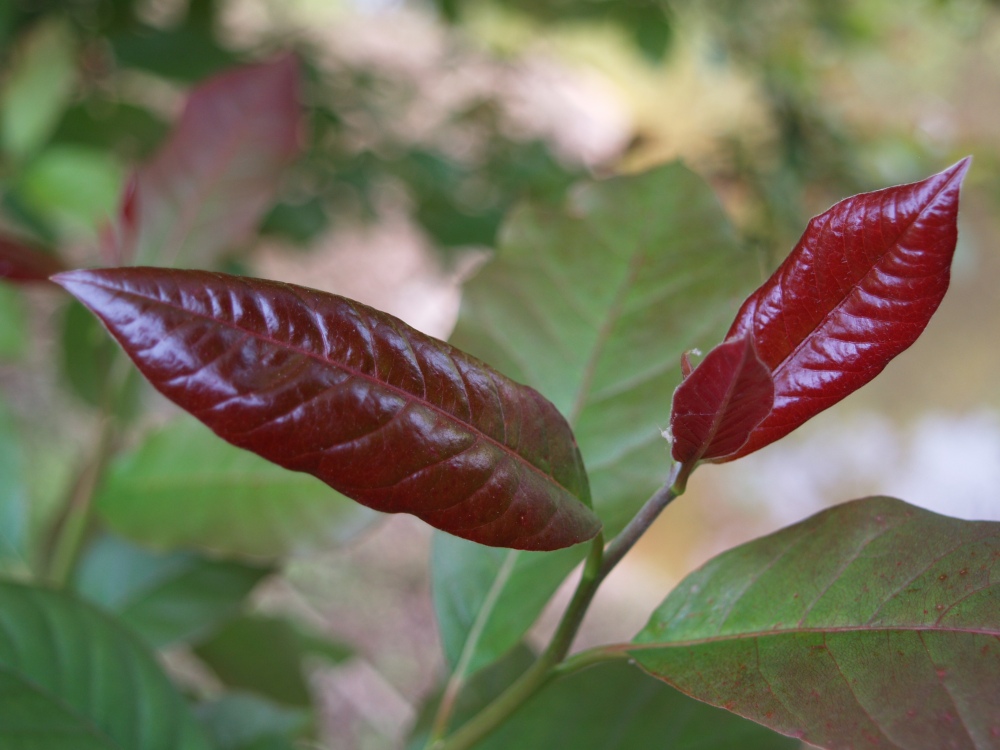
Many autumn foliage enthusiasts proclaim that black gum has the finest colors of the season, and in the garden are one native (that unfortunately sits under a towering tulip poplar) and a cultivar (Nyssa sylvatica ‘Wildfire’, above). The mottled autumn color of the woodland tree is superior, but ‘Wildfire’ was selected for color on its new growth, which is quite nice. I’ve learned that black gums are transplanted with some difficulty unless they are grown in containers and then planted, and then they grow vigorously.
The rear of the property ends in a swampy native meadow that eventually drains into a farm pond. In this saturated soil River birch (Betula nigra) and Bald cypress (Taxodium distichum) thrive, shadowing redbuds and crapemyrtles that were planted in slightly drier ground. I have not been favorably impressed with the autumn foliage of the cypresses (that some people seem quite pleased with), but this deciduous conifer is a beautiful tree, and tolerant of wet or dry soils.
The river birches are superior choices for wet areas (or dry). They are longer lived and considerably more disease resistant than weeping willows that are forever dropping branches and dying prematurely. And, despite most gardeners preference for the white birch that is short lived in the heat of the mid-Atlantic, the rough, peeling bark of the river birches is quite marvelous. Lower branches of birch are prone to dying off, and this is a good thing so that the peeling bark is more evident when the branches are pruned away.
Several redbuds have been planted through the garden, though all are cultivars rather than the green leafed native. The cultivars have been selected from seedlings, and then they are propagated by cuttings to assure that desirable characteristics are retained. I’ve planted several red leafed Forest Pansy redbuds (Cercis canadensis ‘Forest Pansy’, above), two variegated leaf ‘Silver Cloud’ redbuds (below), a yellow leafed ‘Hearts of Gold’ , and a weeping ‘Lavender Twist’. The redbuds are splendid in flower, and the large, leathery leaves look fresh through the heat of summer. The foliage color of ‘Forest Pansy’ fades considerably in July and August, but I don’t complain. 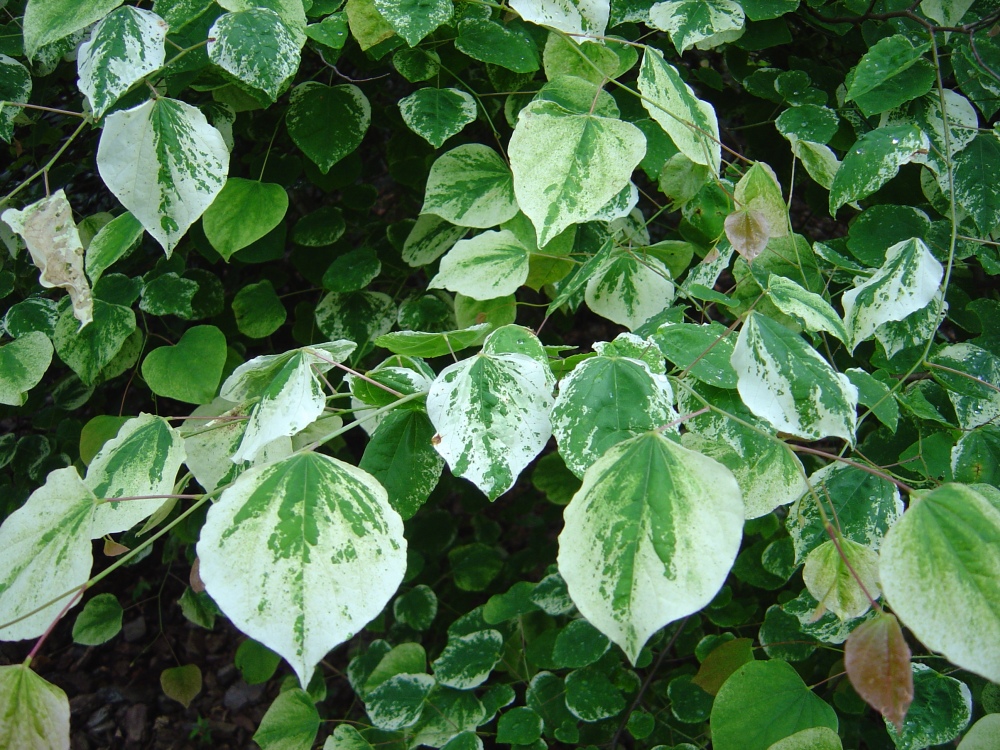
Between the two ‘Silver Cloud’ redbuds I’ve planted two Fringetree (Chionanthus virginicus, below). For a period in the spring the fringetree is unsurpassed in beauty, but the time is all too brief and for the remainder of the year the tree is unremarkable. Still, there is ample reason to include this wonderful native tree in the garden.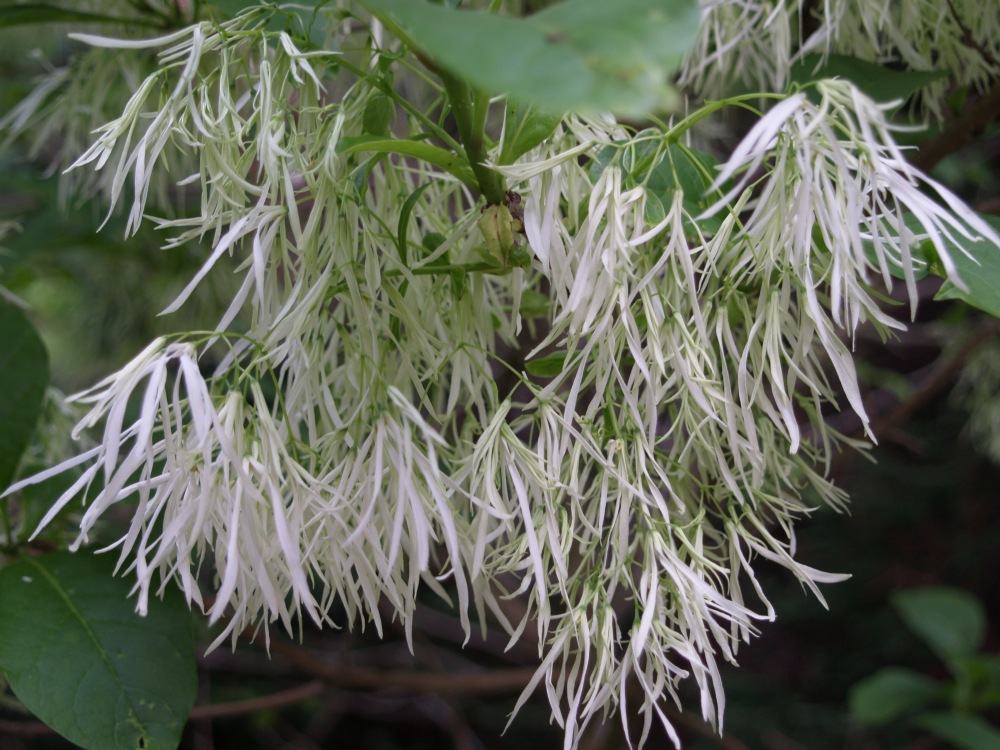
I’ve planted dozens of other trees in the garden, including a collection of Japanese maples, but these native trees deserve consideration for a place in any garden.
Have you tried the service berry fruit? I found them less flavorful than a blueberry, but nice. The birds like them more.
I love mine for its structure most of all (I bought a multibranched, vase-shaped one).
I envy your large plot–in my small backyard, much consideration must be given to tree height because I want to preserve my sun for edibles. I am grateful to live in a neighborhood full of grand old maples and oaks.
I rarely see fruit on my serviceberries. I think that the birds get them as soon as they’re ripe.
M. virginiana is native to your region.